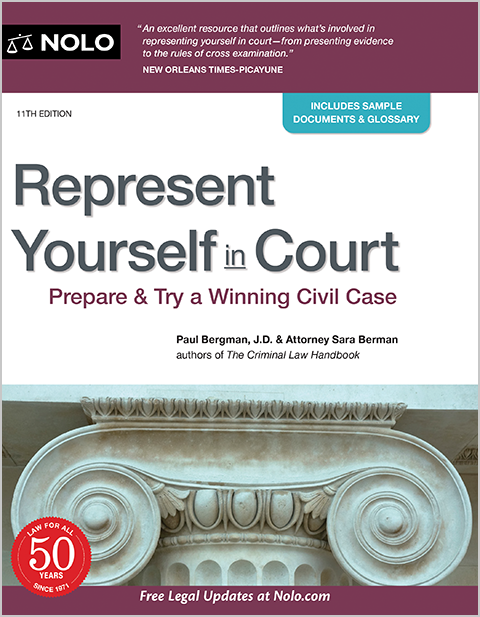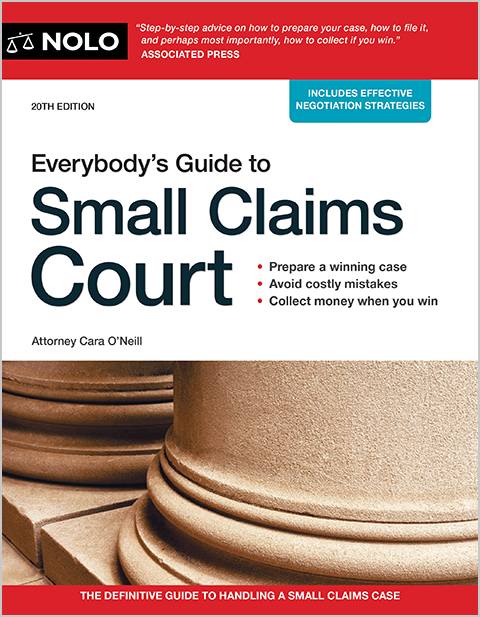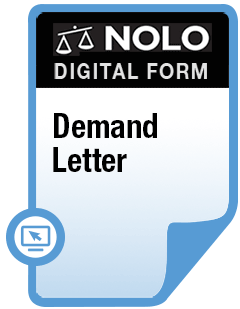You got a Kansas money judgment. Now it's time to collect. We explain how to record Kansas judgment liens, collect on a lien, extend your judgment, and more.
You went to court and got a judgment that says you're entitled to money from the party you sued, now called a "judgment debtor." What comes next? How can you—the judgment creditor—collect what you're owed? That's the focus of this article.
One way to collect is by putting judgment liens on the judgment debtor's Kansas property. After a quick review of how judgment liens differ from judgments, we'll turn our attention to the specifics of Kansas law. In particular, we cover:
- the kinds of property subject to Kansas judgment liens
- how you put judgment liens on Kansas property
- how long your judgment lien lasts, and
- the ways you can turn your judgment lien into money.
If you want some background information, here's more about how court judgments are collected.
What's the Difference Between a Judgment and a Judgment Lien?
A judgment is a court order that says a judgment creditor is legally entitled to a sum of money from a judgment debtor. But a judgment, standing alone, isn't self-enforcing. That is, you can't take a judgment to your county sheriff's office and demand that the judgment debtor's real estate be sold to pay you.
If you want to seize and sell the judgment debtor's property, you first have to attach your judgment to specific items of property. That's what a judgment lien does. In Kansas, a judgment automatically becomes a lien on the judgment debtor's nonexempt real estate in the county where the judgment was entered. Once a judgment lien is in place, you can look for ways to turn your judgment into cold, hard cash.
Kinds of Property Subject to Kansas Judgment Liens
In Kansas, you can attach judgment liens only to real estate, meaning land, houses, buildings, and other improvements. A properly recorded judgment attaches a lien to real estate the judgment debtor:
- presently owns, and
- acquires later, as long as your judgment lien is still good.
You can't put judgment liens on Kansas personal property—cars, artwork, antiques, electronics, household furnishings, and the like. But that doesn't mean a judgment debtor always gets to keep their autos, boats, and other big ticket items. Even without judgment liens, there's a way to have the sheriff seize personal property.
If you're considering this step, speak to a Kansas collection lawyer first. They can tell you whether it's worth your time and expense to go after the judgment debtor's personal property—and there's a good chance it won't be. If it's likely to be worthwhile, they'll guide you through the process.
Property Exempt From Kansas Judgment Liens
Like all states, Kansas exempts some property—both real and personal—from the reach of creditors. Dollar amounts mentioned here represent the maximum value of the debtor's exempt equity in the property, which might not be the same as the property's market value.
Here are a few examples.
- Homestead exemption. Kansas exempts up to 160 acres of rural land or one acre within city limits, including manufactured or mobile homes occupied as a residence.
- Motor vehicle exemption. This exemption shields equity of up to $20,000 in one motor vehicle. Vehicles specially equipped for handicapped persons aren't subject to the $20,000 limit.
- Household goods exemption. All furnishings, equipment, supplies, food, fuel, and clothing reasonably necessary for one year are exempt without a dollar limit.
- Tools of the trade exemption. Tools, books, equipment, breeding stock, seed grain, and other tangible property necessary for the judgment debtor's trade or occupation are exempt up to an aggregate value of $7,500.
How to Attach Kansas Judgment Liens
A judgment issued by a federal court sitting in Kansas or a Kansas district court automatically becomes a lien on the judgment debtor's real estate in the county where the judgment was entered. No additional filing is required.
A judgment lien attaches from the later of:
- the time the petition (the document that starts a Kansas state court lawsuit) was filed, or
- four months before the date judgment was entered.
Getting a Judgment Lien in a Different County
To attach a judgment lien to real estate in a different Kansas county, follow these steps.
- Get a journal entry of the judgment. Your first step is to get an attested copy of the journal entry of judgment—a summary of the judgment—and a statement of costs taxed against the judgment debtor. You'll get this from the clerk of the court that entered the judgment. Check the clerk's website for instructions, and to see about online or phone orders. If you don't find what you need there, call the clerk's office for directions. You'll need one attested copy and cost statement for each county where you want to attach a judgment lien.
- File in the district court clerk's office. File a copy of the attested journal entry and statement of costs with the district court clerk of each county where you want a lien. There will be a small filing fee. A lien attaches to the judgment debtor's real estate in each county from the date of filing.
Limited Action Judgments
If you got a judgment in a Kansas "limited action"—one where the amount involved typically is $25,000 or less—the district court clerk must enter it on the appearance docket. That entry attaches a lien to the judgment debtor's real estate in the county where the judgment was entered.
You attach limited action judgment liens in other counties by following the procedure described above for attaching other out-of-county liens.
Judgment Lien Expiration
A Kansas judgment lien expires five years from the date judgment was entered, unless you take steps within that five-year period to collect on the judgment or renew it, as described below.
How Long Does a Kansas Judgment Last?
A Kansas judgment becomes "dormant" five years from the date of entry, unless during that five-year period you:
- take steps to collect it, or
- file a renewal affidavit with the court.
A dormant judgment isn't quite dead, but it's not exactly alive, either. Think of it as a "zombie" judgment. You can't take any steps to collect it unless you revive it. And if you don't revive a dormant judgment within two years, the judgment debtor can ask the court to kill it, once and for all.
How to Keep Your Judgment From Going Dormant
The easiest way to keep a Kansas judgment from going dormant is to file a renewal affidavit. Simply prepare an affidavit, signed by you or your attorney, stating the amount that's still due on the judgment. File it with the same court that issued your judgment. Once it's filed, the renewal affidavit resets the five-year dormancy clock.
There's no limit on the number of times you can renew a judgment.
Reviving a Dormant Judgment
When a Kansas judgment goes dormant, you have two years to revive it. Stated a bit differently, there's a two-year revival window. The window opens at the end of year five, and it closes at the end of year seven, both counting from the later of the date:
- the judgment was entered
- you last filed a renewal affidavit, or
- you last took action to collect on the judgment.
To revive a judgment, you must file a motion to revive with the court that issued it. You also must ask the court to issue an order of execution (collection) immediately. You'll need to serve these documents on the judgment debtor, just as you would serve them with a lawsuit.
The court will order the judgment revived unless the judgment debtor proves it's been paid or is no longer good.
How Do You Turn a Kansas Judgment Lien Into Money?
In general, there are three ways you can try to collect on a Kansas judgment lien:
- negotiate a settlement
- wait for the judgment debtor to sell or refinance the property, and
- execute on your lien.
Negotiate a Settlement
If you want payment sooner rather than later, this is likely your best choice. No, you won't get all the money you're entitled to, but that's the nature of a settlement. You'll collect faster—and more inexpensively—than via the other two options.
Wait for the Judgment Debtor to Sell or Refinance
Most often, a buyer or lender will insist on clear title, free of all judgment liens. To sell or refinance, the judgment debtor will have to approach you to make a deal. Only now, you've got more negotiating leverage. As long as you're willing to sit tight and wait, this too is a low-cost, low-stress way to collect.
Execute on Your Lien
Executing on your lien means having the sheriff sell the judgment debtor's property at auction. This might seem like a tempting option. But before you head down this path, check with a local attorney to find out about the legwork and costs involved. In addition, see who's ahead of you in payment priority, or you might discover—too late—that the sale proceeds aren't enough to pay you in full (or at all).
Lastly, be aware that this step might be just the push the judgment debtor needs to declare bankruptcy. Should that happen, you're likely to be standing in a long, very unhappy line of creditors with little chance of getting paid.
Next Steps
We've covered Kansas judgment lien basics, but of course, the devil's in the details. Now that you're familiar with Kansas law, you might decide that your best option is to get help collecting your judgment. An experienced Kansas creditor's rights or collection attorney can answer your questions and help you chart a collection path that gives you the best chance to maximize your recovery.



